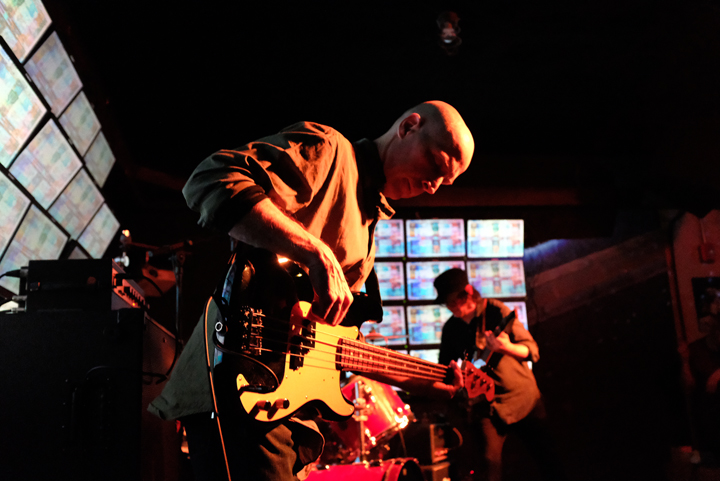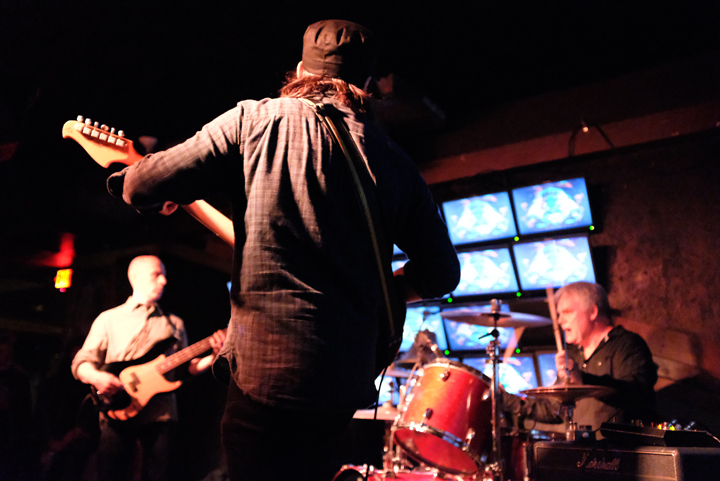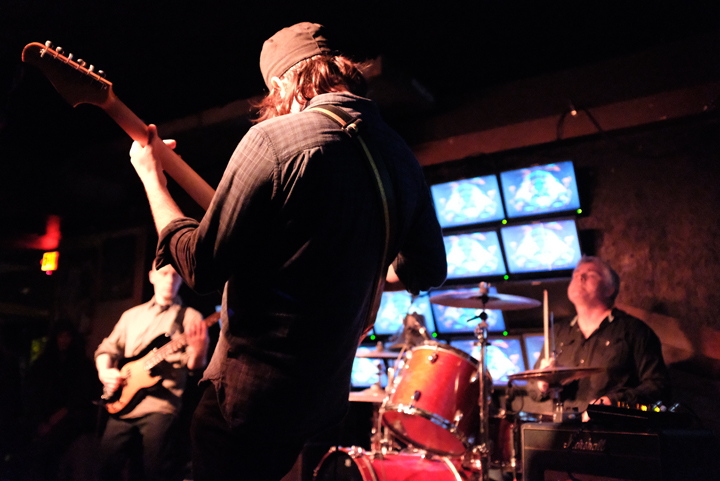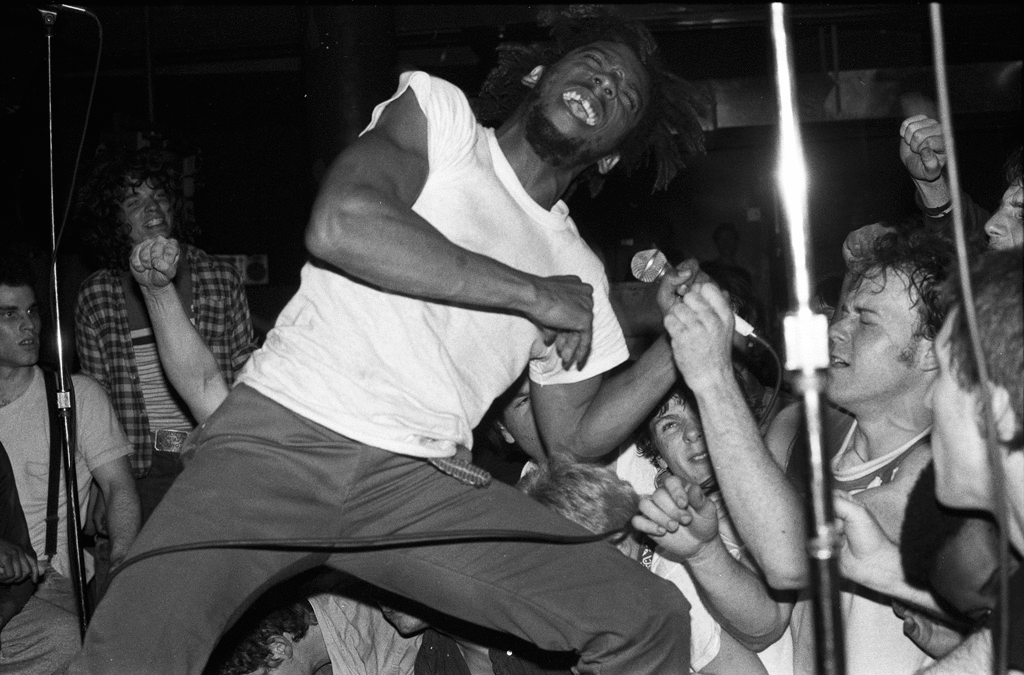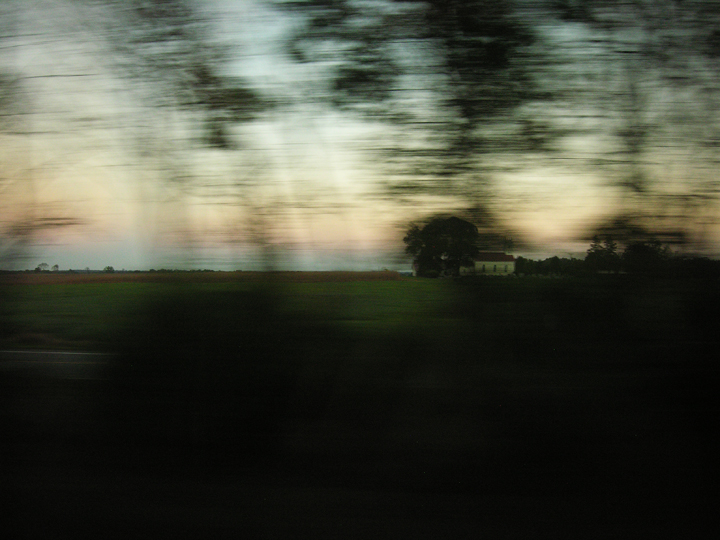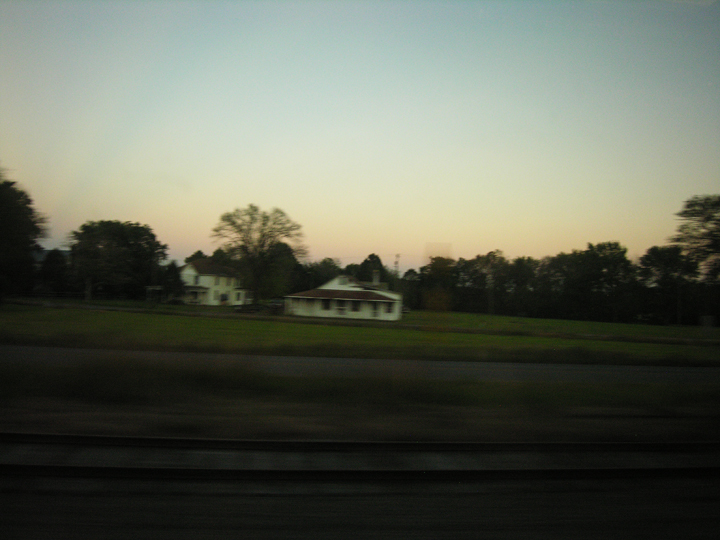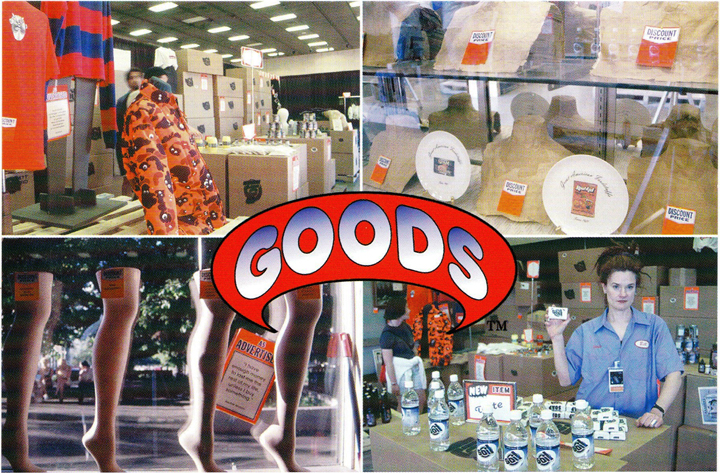
In 1997 Soil Artists Collective was about two years old. The group ran a gallery space in a lower level in an old warehouse near the Seattle Art Museum. The entrance was on the Harbor Steps and the space was large and dark, with uneven, splintery floorboards. This appealed to me and the work they showed was interesting, often good. When Soil issued a call for new members a few months after I first visited, I applied and was one of the six people they accepted (all women, as it happened).
There were about two dozen members who paid monthly dues (about $35) and committed to gallery-sit once a month. This covered the rent and other costs and the staffing (the rent was low; the dot.com boom hadn’t kicked in yet). No one was guaranteed a solo show but there were lot of groups shows and opportunities to participate. Anyone could propose a project, which would be discussed and voted on. Everything was discussed, a lot and voted on, often more than once. I wasn’t used to this style of careful consensus-building and passive-aggressive maneuvering and had to learn to tamp down my East coast directness, lest I seem hostile.
A brand-new arts festival called artsEdge was looking for applications and word was that the organizers had a lot of space and not a lot of submissions. A fellow member of Soil submitted a casual proposal for a store called Goods that sold art. His method was to steal bits and pieces of other people’s writing and fluff it out; the proposal sprouted phrases like “a new aesthetic economy manifest in the metaphor of the thrift store”. It was a kernel of an interesting idea and a lot of bullshit, but it sounded hip and fun. ArtsEdge accepted the proposal, the flimsy idea needed to be developed and a show organized. The other members were not interested in helping pull the show together. I’d been looking for a project, knew how to organize stuff and did environments, so I signed on to help bring this idea into reality.
Having done craft festivals as a kid, run a flea market stand and done retail as a teen/young adult, the idea of the store, of making multiples, of art at every price point, was something I’d thought about a lot. Talking about consumption made me think of discount stores like Big Lots, the final stops of consumer goods where the retail shopping experience starts to break down and things are bare-boned. Rather than a polished gallery store setting, I envisioned an discount warehouse selling art, from the useful to the highly conceptual.
In the back of a used store fixture warehouse I found a pile of unused paper signs and tags from the 60s in fluorescent orange and blue and bought them all. Another member of Soil collected relevant quotations and printed them on the larger signs. Of course the French theorists made an appearance, but also quotes from Andy Warhol and Jackie Mason.
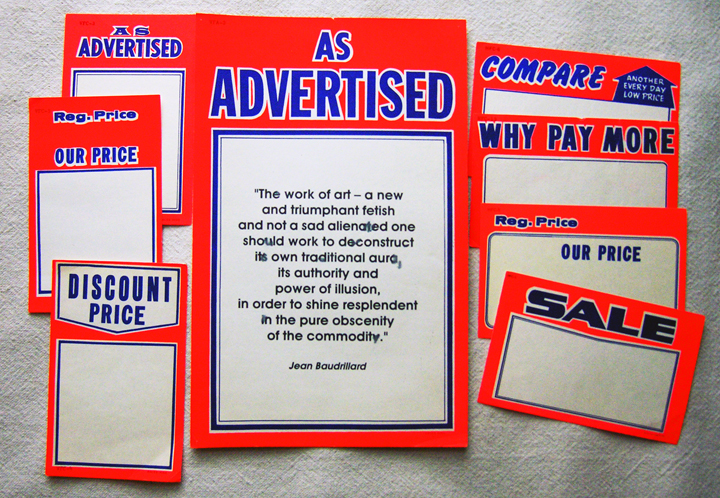
The smaller signs, postcard-sized, became the show cards. The budget was too small to print cards, so I rubber-stamped them.
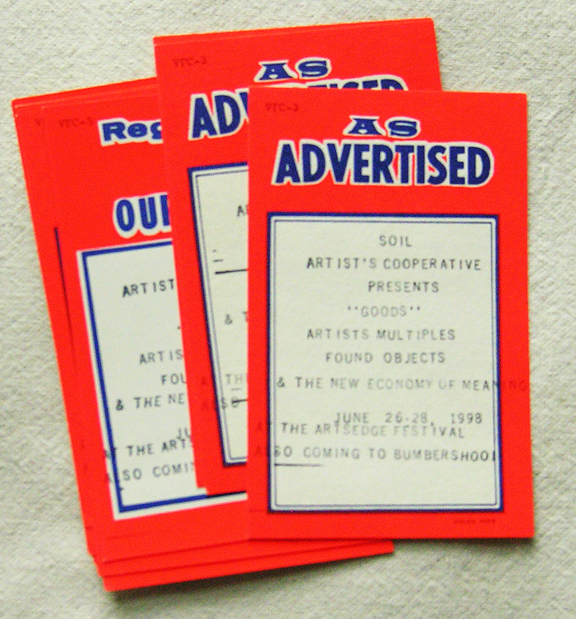
The orange and blue graphics became a visual signature for the show. The rest of the visual elements — cardboard boxes, wood pallets, battered mannequin parts — helped create the warehouse environment, down to the details, a door beeper, cash register. The ’employees’ (members of Soil, who took shifts) included a manager, a blue-haired security guard, and blue-smocked cashiers whose name patches all bore the same name, Bill.

Demi Raven, store manager
The goods in “Goods” were created by artists and varied wildly. Artists ran with the suggestion that they make multiples and packaged items and keep the prices very low. Demi Raven did junk food collector’s plates, Sean Miller created Liverbrau, with labels featuring famous alcoholics.

Laurie Cinotto’s organ kits — seal-a-meal packets with goo, dyes, and unidentifiable scraps and tubing — were a big hit with doctors. I loved the “Packet of Icons”, a few bits of interesting ephemera packaged in a bag with a label for $3 each. No two were alike and people would spend a long time in front of the rack, going through all the packets, deciding which to buy.
I made a few quick multiples — greeting cards, novelty dolls and small self-mutilation kits — all sort of punk jokes — but I sold several of each.

I also created generic products to fill in the displays. Using the Tide logotype turned downwards (towards the ground — soil), I designed a logo and relabeled dollar store items like lotion, soap and water. A few of these sold, but mostly they were set dressing.

(photo by C. French)
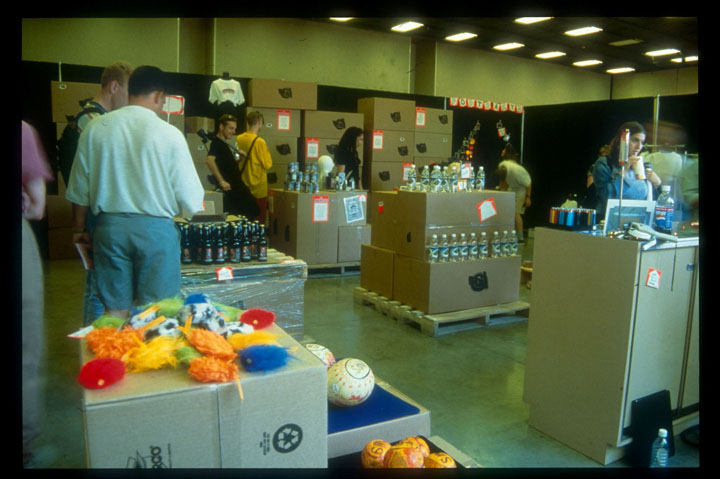
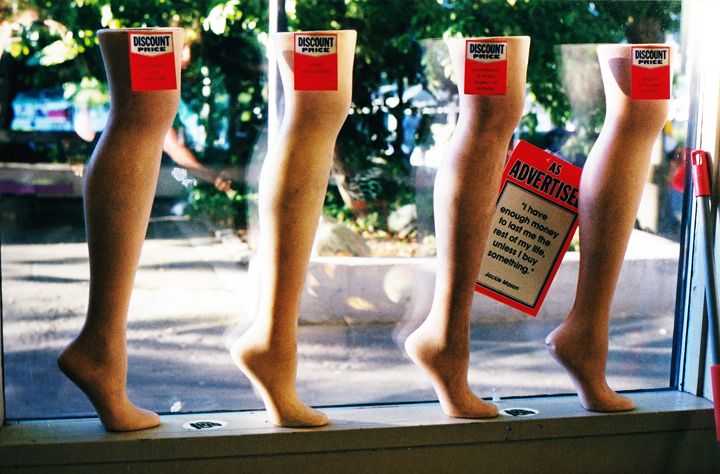
While the artsEdge show was open, a second proposal went out to Bumbershoot, the large music and arts festival. This was accepted and the second iteration of Goods was restaged in a smaller space. Bumbershoot is a very big festival, and the show had thousands of visitors and got some good reviews, including one in The New Art Examiner. “Goods” — the show itself or the individual work — wasn’t finely wrought and polished, but that wasn’t as cool at the moment. The best term I heard for the sort of work being produced then was “rotten pop”, which was coined by artist Jesse Paul Miller. This work combines the detritus of America (that’s where the thrift store comes in), with/against the theory that was (still is?) popular in art schools. It was the age of stuffed animal art, still upon us.
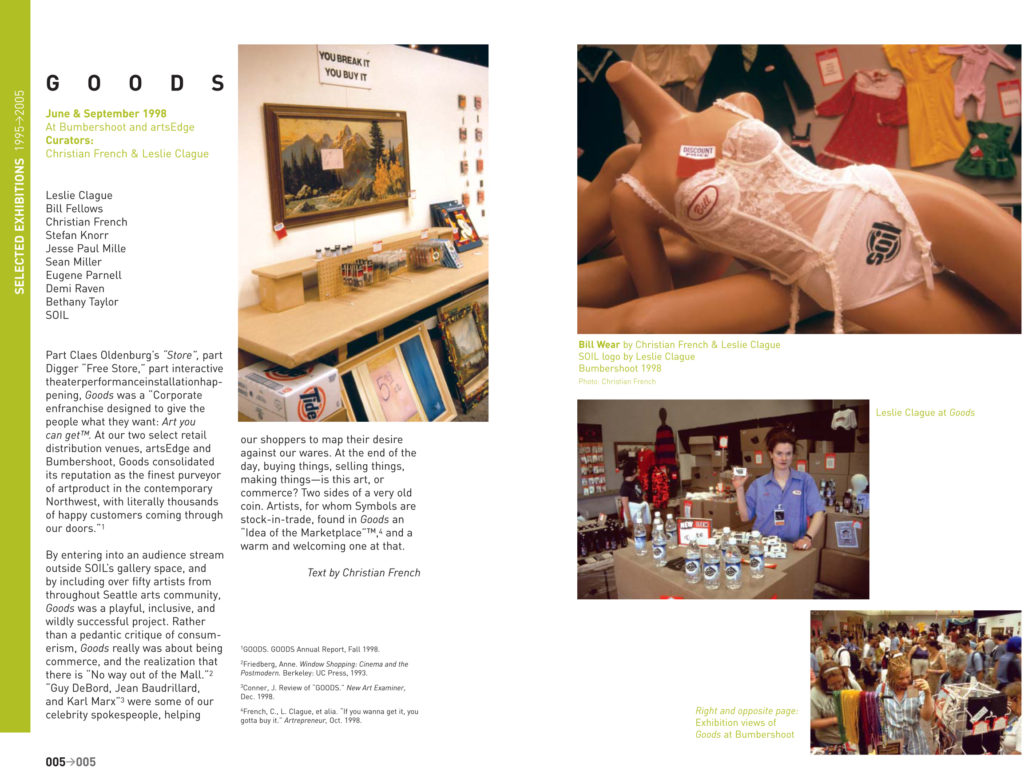
(spread from the Soil Arts Collective book)
Being in a group like Soil was a great transition from art school into establishing myself as a working artist and organizer. In a little over a year I learned some basics of how to run a gallery, put projects together and work with people who often had very different ideas of how to go about things. All of these are real-world skills and it didn’t matter that I didn’t get them through a paying job.
There are all kinds of artists’ collectives but most don’t last that long.
On this point Soil deserves a lot of credit. Despite the inevitable frictions that arise between artistic personalities, the structure of the group proved to be durable. Soil has now been going for 23 years, moving from space to space as rents climbed. After the Harbor Steps lease expired there was a basement in Pioneer Square, then a space on Capitol Hill. I lost track of their moves after that, but nowadays Soil is back in Pioneer Square, in the Tashiro Kaplan building, still going strong.
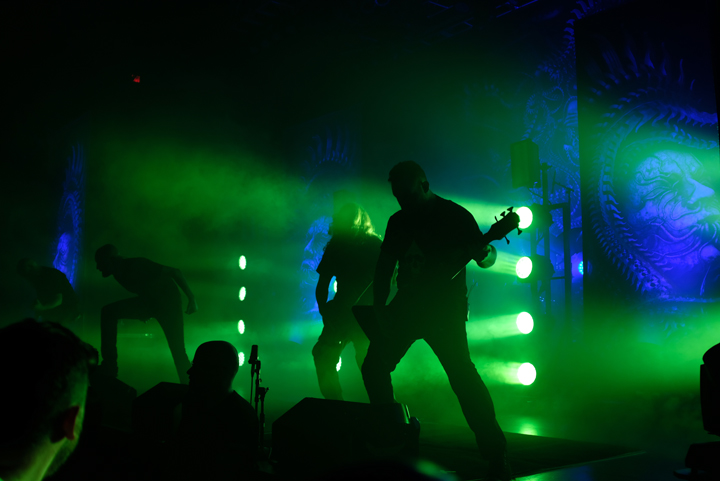
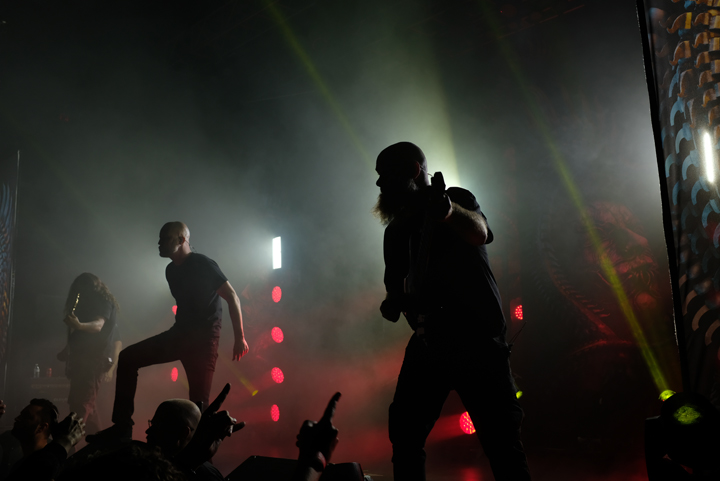
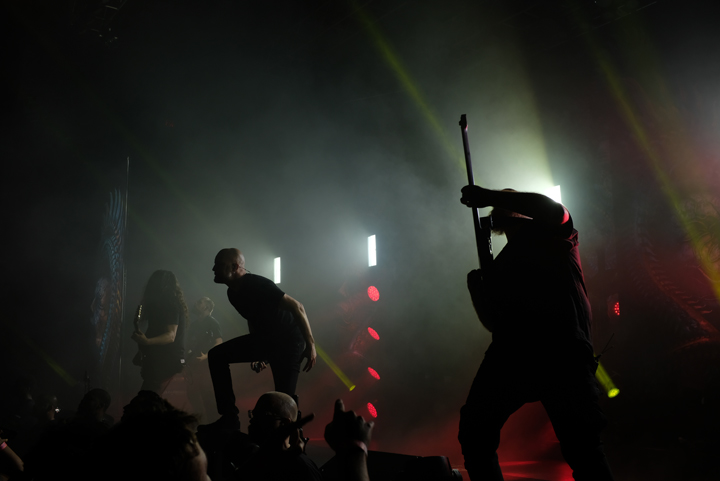
 These are right off the camera, I didn’t alter the color or saturation. The intensity of the lighting works really well with Meshuggah’s dense, super-heavy sound.
These are right off the camera, I didn’t alter the color or saturation. The intensity of the lighting works really well with Meshuggah’s dense, super-heavy sound.
